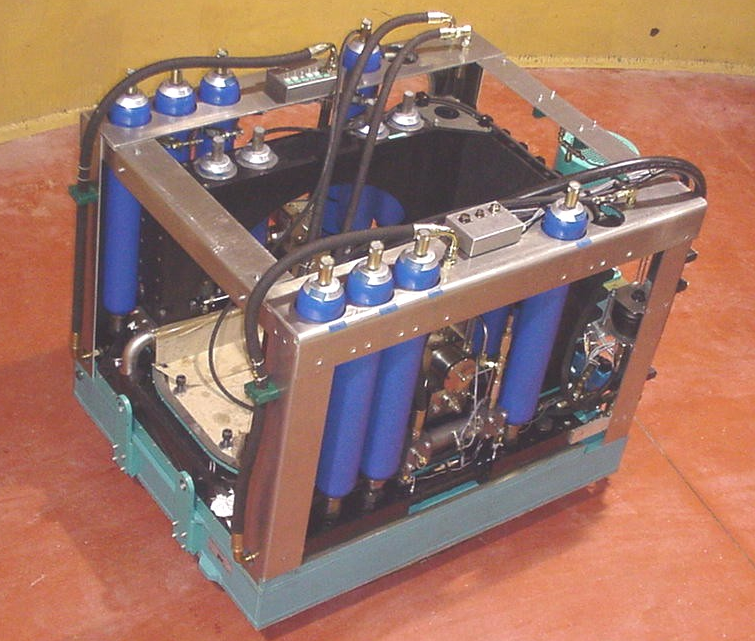Shaker
The earthquake simulator mainly consists of a shaking table installed in the centrifuge. It allows horizontal vibration to be imposed at the base of a small scale model of a geotechnical structure (foundation, slope, wall, etc.) prepared in a reconstituted soil container. The applied vibration is a temporal sequence of controlled acceleration: a sine, a real earthquake recording, or a synthetic earthquake. The maximum horizontal acceleration of 0.5 times the Earth gravity (0.4 g max. for the 1995 Kobe earthquake) is a first in Europe. Small scale models can reach a scale of 1/80th. By following the scalling laws (frequencies multiplied by 80, displacements divided by 80) the results can be transposed to full-scale works and allow validation of the numerical models.
The very high quality of acceleration sequence control eliminates parasitic effects, which are always difficult to quantify and analyze in vibration mechanics.
This tool, recognized in the scientific community of earthquake engineering, makes it possible to carry out at a lower cost: parametric studies of the seismic response of civil engineering structures, but also operational studies. Research focuses on the behavior of shallow and deep foundations, slope stability, soil liquefaction - and its consequences on retaining structures and networks.
